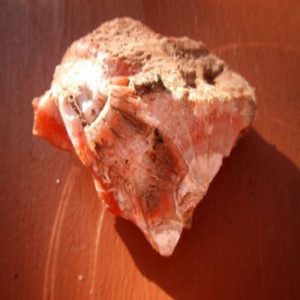Thomsonite
Thomsonite is a member of the Zeolite Group of minerals that includes over 40 minerals and these gem-type minerals: Analcime, Barrerite, Chabazite, Epistilbite, Gmelinite-Na, Goosecreekite, Mordenite, Natrolite, Pollucite, Scolecite, Stellerite, Stilbite, Thomsonite and Yugawaralite.
Thomsonite can be found in many locations worldwide but only few produce good crystal specimens and even fewer produce the beautiful and colorful concentric “eye” patterns like those found in the western Lake Superior area; Isle Royal and the Keweenaw Peninsula in Michigan and the Grand Marais, Minnesota area.
Pure Thomsonite is snow-white and sometimes translucent; very, very rarely suitable for faceting. Impurities such as ferric and/or ferrous iron or copper are responsible for the various colorations within the mineral. Commonly found colors are pink, tan, white, red and brown. Those with green, gray or black backgrounds or green eyes are the most highly prized but rarely found. These concentric, colorful eye patters make beautiful cabochons.
| Category: | Tectosilicate (zeolite ) |
| Formula: | NaCa2Al5Si5O20·6H2O |
| Crystallography: | Orthorhombic – Dipyramidal |
| Crystal Habit: | Commonly prismatic, acicular, or bladed, flattened, elongated and striated, to 12 cm; in radiated spherical or columnar aggregates; smooth, globular, botryoidal; compact, massive. Twinning: On [110]. |
| Cleavage: | [101] Perfect, [100] Good |
| Fracture: | Uneven, Conchoidal, Subconchoidal |
| Tenacity: | Brittle |
| Moh’s Hardness: | 5.0 – 5.5 |
| Density: | 2.30 – 2.40 (g/cm3) |
| Radioactivity: | Not Radioactive |
| Color: | Colorless, White, Greenish, Yellow, Pink; may be concentrically zoned |
| Transparency: | Transparent to Translucent |
| Luster: | Vitreous (Glassy), Pearly |
| Refractive Index: | 1.511 – 1.545 Biaxial ( + ) |
| Birefringence: | 0.0050 – 0.0150 |
| Dispersion: | Dispersion distinct to strong, r > v |
| Pleochroism: | Colorless |


